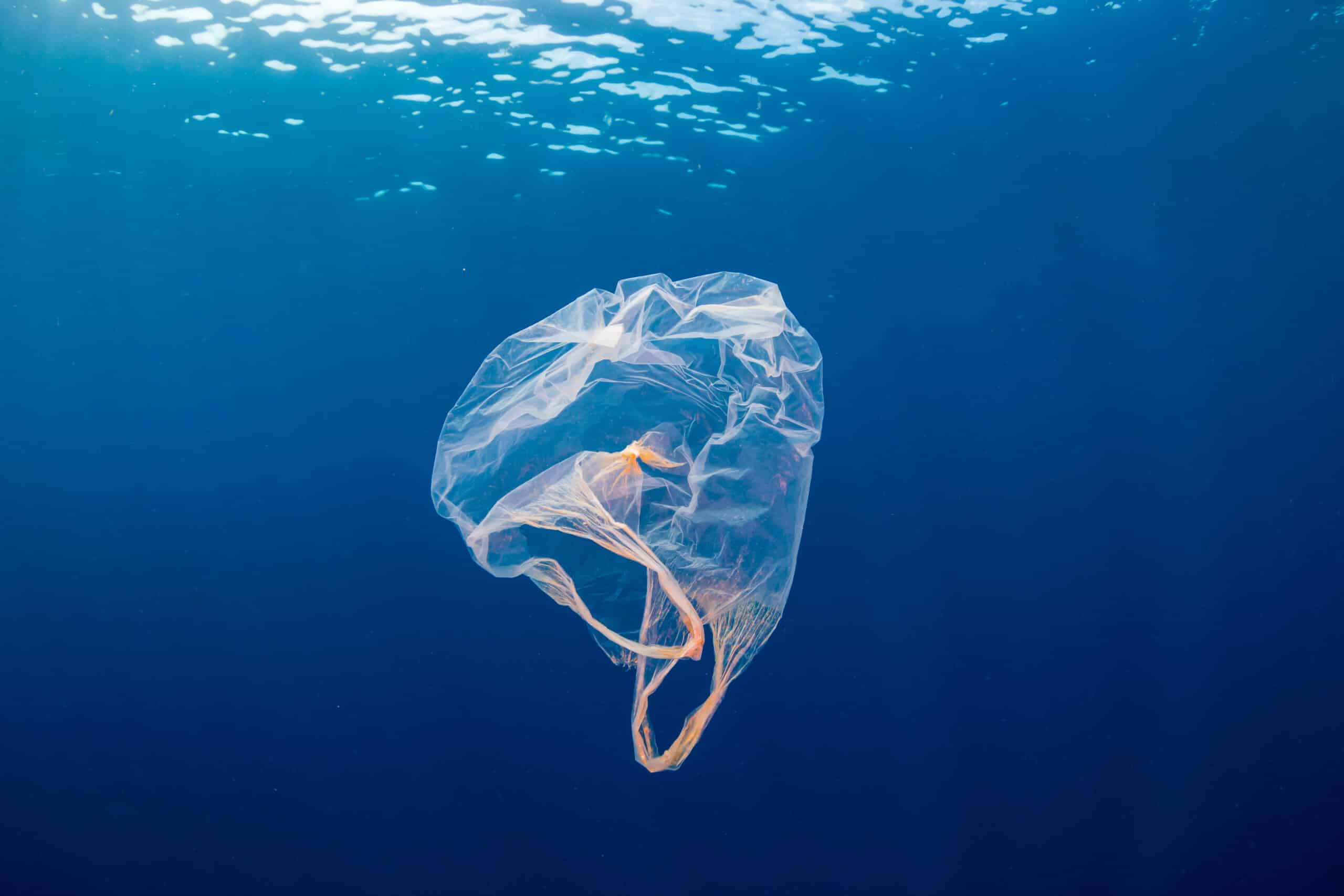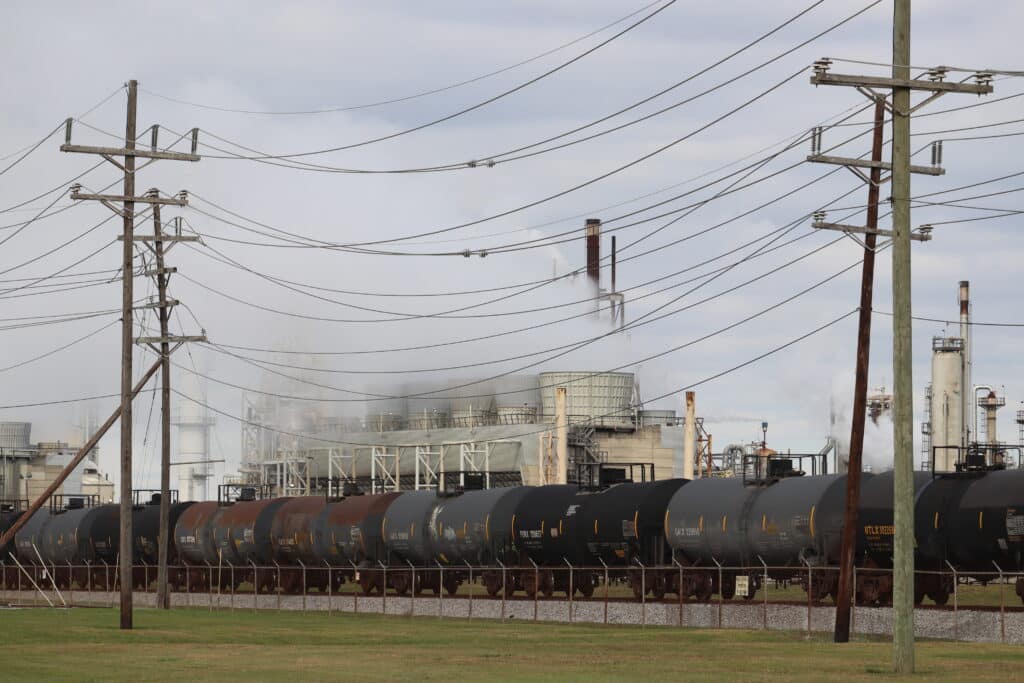- Blog
- Climate & Energy Justice
- Plastic Pollution
- How Plastics Are Produced
How Plastics Are Produced

Donate Now!
Your contribution will benefit Friends of the Earth.
Stay Informed
Thanks for your interest in Friends of the Earth. You can find information about us and get in touch the following ways:
Plastics pollute throughout their entire life cycle, from extraction as fracked gas and oil, to production at petrochemical factories, throughout their use in consumer products, and finally their disposal, recycling, and/or escape into the environment. In the United States, how plastics are produced is predominantly in low-wealth communities and communities of color throughout the Gulf South and Ohio River Valley, poisoning the air and water for nearby residents.
The chemicals used in plastics manufacturing continue to affect consumers and some, like PFAS chemicals, are now found nearly everywhere on Earth. Because of how plastics are produced, they are resistant to biodegradation and break into smaller and smaller pieces of the same material. Plastic pollution effects can be found in our food, water, air and bodies. It’s also a climate destroyer from the moment it is brought out of the ground as oil and gas, to the energy intensive production processes. Plastics even continue to emit greenhouse gasses as they break down.
In order to curtail the plastic pollution crisis, it is imperative that new plastics manufacturing is stopped. We’re asking financial institutions to stop financing the plastic crisis – starting with the biggest banks in the U.S.
What is petchem?
Petrochemicals, sometimes abbreviated to petchems or petrochems, are chemical products derived from fossil fuels – coal, oil and gas. Petrochemicals are the building blocks of plastics, as well as synthetic fertilizers and pesticides. They are the start of the cycle into how plastics are produced.
How are petrochemicals tied to plastic pollution?
Plastics pollute at every step – from extraction as oil and gas to manufacturing at petrochemical plants to consumer goods and packaging to disposal or escape into the environment. In one process of how plastics are produced, a flurry of hydraulic fracturing (fracking) chemicals are pumped deep into the earth to release fossil gas, which is then separated into methane and different natural gas liquids. The liquid ethane is further processed into ethylene at a “cracker” facility, releasing toxic air pollution and greenhouse gasses. The ethane crackers’ final product is tiny polyethylene balls, called nurdles, which are the building blocks of many plastic products. Nurdles escape during production and transport, polluting rivers, oceans and soil. Additionally, the nurdles are combined with a variety of other toxic chemicals to produce plastic materials with different qualities. When consumers eat or drink out of plastic containers, the chemicals and microplastics leach into our bodies, and when plastic breaks down in the environment, those small microplastics transport their toxic chemicals throughout the world, from the Marianas Trench to Mount Everest.
What does plastics manufacturing entail?
Plastics manufacturing in the United States is centered in the Gulf South and the Ohio River Valley, in communities that already bear the brunt of many other industries, with the more acute exposure to the air and water pollution near sites of plastics manufacturing. However, we’re all affected by plastics through using consumer products made with plastics, as well as through our air, water, and food that are now contaminated with small pieces of plastics and chemicals used in plastics manufacturing.
What are the impacts of petchem?
Environmental racism in St. James, Louisiana
Formosa Plastics plans to build an estimated $12 billion petrochemical facility that would take up the space of 1,818 football fields in St. James Parish, Louisiana. This project – given a deceptively bright name of the ‘Sunshine Project’ — would dim the skies with 800 tons of toxic air pollution and 13.6 million tons of greenhouse gas pollution in an area so inundated by industrial activity that it’s commonly called “Cancer Alley”.

Along the Mississippi River between New Orleans and Baton Rouge, over 200 industrial plants concentrate pollution in predominantly low wealth and black communities, perpetuating a legacy of racism from slave plantations to mortgage redlining. Cancer rates in this area are in the top 5% of the U.S., and emissions of ethylene oxide and other pollutants have been linked to lower birth weights and miscarriages.
Ocean pollution in Point Comfort, Texas
Following years of plastic pellet pollution into Lavaca Bay, Formosa Plastics’ Point Comfort, Texas plant was fined $50 million in 2019 in the largest Clean Water Act settlement to date brought by an individual citizen. As part of the settlement, the plant was issued a zero discharge of plastic mandate, enforced with tests thrice weekly tests since June 2021. They have failed every single test and racked up additional fines of over $18.5 million USD. Instead of cleaning up their act, Formosa Plastics plans to expand their polluting facility.
How is this linked to plastic pollution?
Facts about plastic pollution: Climate connection
The petrochemical industry uses more energy than any other industry in the world. When it comes to how plastics are produced, petrochemical facilities in the United States produce as much greenhouse gas pollution as 116 coal-fired power plants — one of the dirtiest forms of energy production. When plastics are exposed to sunlight, they continue to release greenhouse gases, exacerbating climate change throughout their long existence.
Facts about plastic pollution: Microplastics, PFAS chemicals, and other chemicals of concern
People living near petrochemical plants bear the brunt of plastic pollution effects, but their often single-use plastic products break down into smaller and smaller pieces that spread throughout our environment contaminating our food,water, and bodies. Even breast milk and placentas are polluted with microplastics. Of the over 16,000 chemicals in plastics, only 5,800 have been tested for toxicity and close to three quarters of those are hazardous to human health. These chemicals are linked to numerous health problems ranging from cancers to reproductive harm. One of the additives in plastics, PFAS chemicals, or forever chemicals, have been found everywhere from rainwater to human bloodstreams around the world.
How to stop plastic pollution
Stopping plastic at the source of production
Plastics pollute throughout their supply chain creating a death cycle of toxic chemical residue.. While downstream actions like beach cleanups and single-use plastic bans are crucial, stopping the expansion of new petrochemical plants is necessary to address plastic pollution at the source.
Finance campaigning and the business case against petrochemicals
Friends of the Earth works with local organizations to stop specific projects like the Formosa Plastics’ “Sunshine Project” in St. James Parish, Louisiana, and coalitions like International Monitor Formosa Plastics Alliance, Break Free From Plastic, and Stop the Money Pipeline to stop the buildout of petrochemical plants nationally. We’re demanding big banks, like Bank of America, Citi, and JP Morgan Chase, refuse to do business with companies participating in the petrochemical buildout and instead invest in clean energy projects, reuse infrastructure, and community-led projects.
